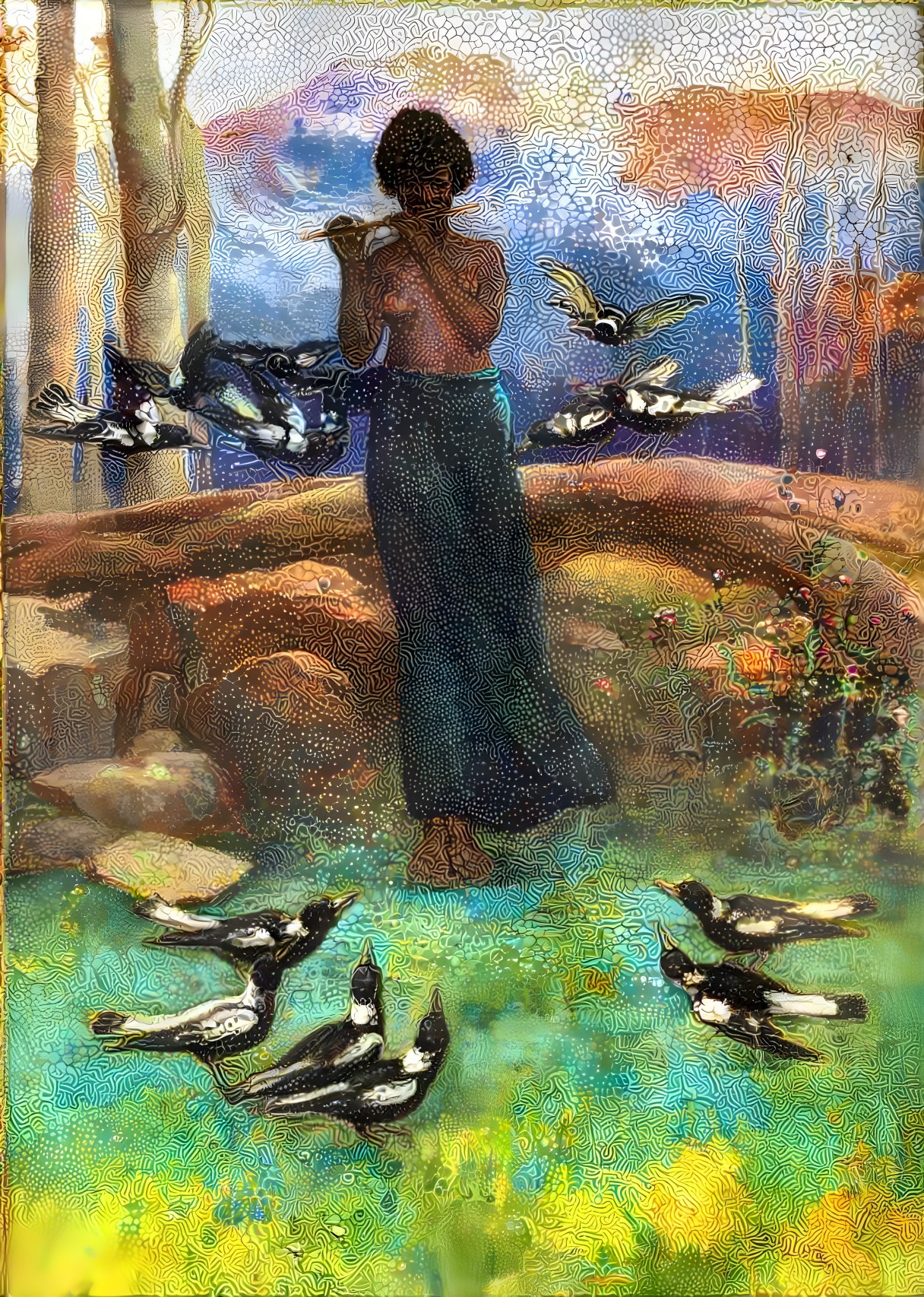Comments
Loading Dream Comments...
You must be logged in to write a comment - Log In

 Artist
Artist
The Australian magpie does not merely sing; it performs. Its voice is an instrument—elastic, expressive, and as technically astounding as any human-made horn. Deep within its throat lies the syrinx, a double voice box that allows it to produce two independent tones at once. The bird can therefore sound two notes, two melodies, or even two emotions simultaneously. It is the natural world’s version of John Coltrane’s split-tone saxophone technique, when he would drive so much breath through his horn that overtones and harmonics seemed to burst free, vibrating with the sound of multiple instruments at once. Through this dual mechanism, the magpie creates sounds that are distinctly polyphonic: warbles that bend into trills, liquid gurgles that glide into flute-like whistles, and sliding phrases that twist upward like smoke. What begins as a song becomes a stream of invention, a natural improvisation that constantly renews itself. Like Coltrane’s legendary sheets of sound, the magpie’s voice never stays still—it wanders through tonal centers, changes rhythm, stretches time, and dissolves form into feeling. Coltrane’s later improvisations—especially in A Love Supreme, Ascension, and Meditations—broke away from the boundaries of conventional harmony. He found freedom within limitation: by staying centered on a single mode or scale, he could explore the infinite variations contained within it. The magpie, too, begins with a simple motif and transforms it endlessly. Its calls ripple through permutations—some familiar, others startlingly new. Both Coltrane and the magpie work through dialogue. Coltrane traded melodic calls with his fellow musicians; the magpie answers the distant echoes of its own voice or the songs of others across the open air. Each creates a musical conversation that expands outward, filling space with energy. Their long, fluid phrases seem to inhale and exhale the world itself, leaving traces of meaning that are felt more than understood. In the vast Australian landscape, the magpie’s song becomes part of the atmosphere. The open plains, the dry light, and the resonance between trees and rocks create a natural reverb chamber. Every note the bird releases is reshaped by the land, stretched and softened by wind and distance. In this way, the environment itself collaborates in the composition, much as Coltrane used recording spaces and instrumental tone to evoke vastness. The magpie’s song, carried across eucalyptus groves and through pale morning air, feels like the sound of the landscape dreaming. It resonates with the same spaciousness that fills Coltrane’s late music—a search for sound that seems to reach beyond the physical, toward the spiritual or cosmic. Both Coltrane and the magpie are seekers of the infinite. Coltrane turned music into prayer, striving through tone and rhythm to approach divinity. The magpie’s dawn song—long, unstructured, ecstatic—feels like a hymn of the living world. It is not just communication or display but